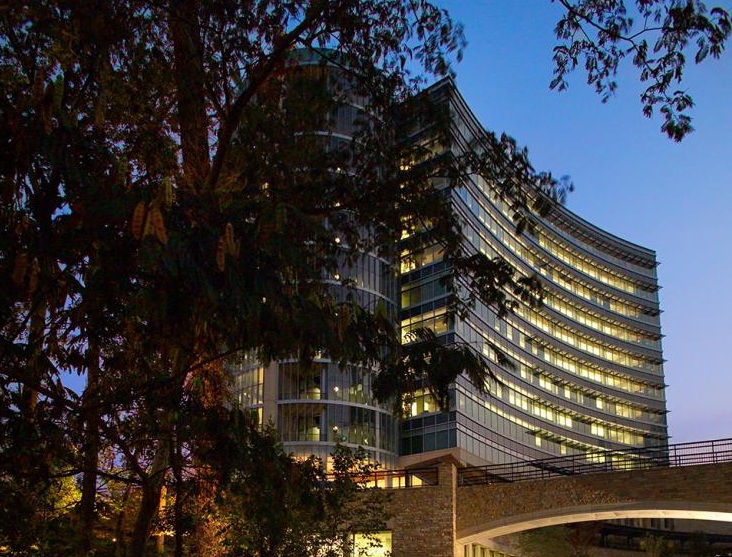Medical experts are pinning their hopes on entirely new strategies for dealing with infection. To find novel ways of killing bugs, they're looking in exotic places—in viruses and fish slime and even on other planets. They're using insights gained in genomics and other fields to come up with new technologies to kill bugs and keep them from spreading. And they are re-examining practices in hospitals and other spreading-grounds for bacteria, putting in place more holistic strategies for managing the bacteria in our bodies and in our hospitals and doctors' offices.
醫學專家把希望寄托在應對感染的全新策略上。為了找到殺死細菌的新方法,他們在奇異的地方尋找——病毒和魚膠,甚至在其他星球上。他們利用從基因組學和其他領域獲得的洞見,提出了殺死細菌并阻止它們傳播的新技術。他們正在重新檢查醫院和其他細菌傳播場所的做法,制定更全面的策略來管理我們體內、醫院和醫生辦公室的細菌。
The alternatives sound promising, but they are far off. It's not clear that we can invent new weapons before the superbugs, like a zombie army at the gates, overwhelm our defenses.
其他選擇聽起來很有希望,但它們還很遙遠。目前還不清楚我們能否在超級細菌(如同門口的僵尸大軍)擊潰我們的防御系統之前發明出新的武器。
“We need to make a huge investment in other approaches,” says Margaret Riley, a drug-resistance researcher at the University of Massachusetts. “And we need to make it 15 years ago.”
“我們需要在其他方法上進行巨額投資,” 馬薩諸塞大學的耐藥性研究員瑪格麗特·萊利表示。“我們需要在15年前做到這一點。”
The New Bug-Hunters
新的漏洞發現者

Part of the problem with drug resistance is that microbes evolve with alarming speed into new species. Whereas a human needs 15 or more years to mature enough to have offspring, microbes like E. coli reproduce every 20 minutes. In a few years, they can go through evolutionary change that would have taken humankind millions of years to accomplish—change that can include acquiring genetic attributes that allow them to withstand drugs. A human on antibiotics is the perfect lab for developing resistant microbes. “Research shows that whenever a new antibiotic comes into use, we start to see the first resistant microbes emerge about a year later,” says Mass General's Shenoy.
耐藥性的部分問題在于微生物以驚人的速度進化成新物種。人類需要15年或更長時間才能成熟到有后代,而像大腸桿菌這樣的微生物每20分鐘就繁殖一次。幾年之內,它們就能完成人類需要數百萬年才能完成的進化變化——包括獲得能夠抵抗藥物的基因屬性。服用抗生素的人是培養耐藥微生物的完美實驗室。“研究表明,每當一種新的抗生素開始使用,我們就會在大約一年后開始看到第一批耐藥微生物出現,”馬薩諸塞綜合醫院的謝諾伊如此表示。
There's little in the pharmaceutical pipeline to replace the antibiotics to which bugs are becoming resistant. That's because development of a new antibiotic runs about $2 billion and takes about 10 years—with little hope of ending up with the sort of blockbuster drug that justifies such an investment. “The point of having a new antibiotic would be to use it as infrequently as possible, for as short a time as possible,” says Jonathan Zenilman, chief of the division of infectious diseases at Johns Hopkins Bayview Medical Center in Baltimore. “Why would a pharma company want to develop a drug for a market like that?”
在藥物研發過程中,幾乎沒有什么東西可以替代細菌變得具有耐藥性的抗生素。這是因為一種新型抗生素的研發耗資約20億美元,耗時約10年,幾乎不可能研制出能夠證明這種投資合理的暢銷藥物。“擁有一種新的抗生素的意義在于盡可能少地使用它,使用的時間盡可能短,”巴爾的摩約翰霍普金斯灣景醫療中心傳染病科主任喬納森澤尼曼說。“制藥公司為什么要為這樣的市場開發藥物呢?”
譯文由可可原創,僅供學習交流使用,未經許可請勿轉載。












